By Carolyn Mathas, contributing writer
Image sensor offerings are heating up, providing design engineers with advanced features for their industrial, medical, and smartphone designs. Solutions abound, whether addressing artificial intelligence (AI) in real-time machine vision and deep learning; sophisticated vision for object recognition, robots, drones, or advanced driver-assistance systems (ADAS); or image sensors for the best-possible selfies.
Here are 10 recently launched image sensors (in no particular order) to meet the demanding requirements of your next designs.
1. OmniVision OV32A 0.8-micron pixel image sensor
The OV32A provides leading-edge 32-megapixel (MP) resolution with a 1/2.8-inch optical format for high-end smartphone designs. Built using OmniVision’s PureCel Plus stacked-die technology , the OV32A is OmniVision’s smallest-ever pixel pitch. Features include a four-cell color filter array and on-chip re-mosaic, enabling full-resolution, 32-MP Bayer output in normal lighting conditions, and near-pixel binning to output an 8-MP image with 4× the sensitivity in low-light conditions.
Formats include 32 MP at 15 frames per second (fps), 8 MP with four-cell binning at 60 fps, 4K2K video at 60 fps, 1080p video at 120 fps and 720p video at 240 fps. Pad locations on the top and bottom of the image sensor reduce x-direction module size, which is ideal for front-facing cameras in thin-bezel, infinity-display smartphones.
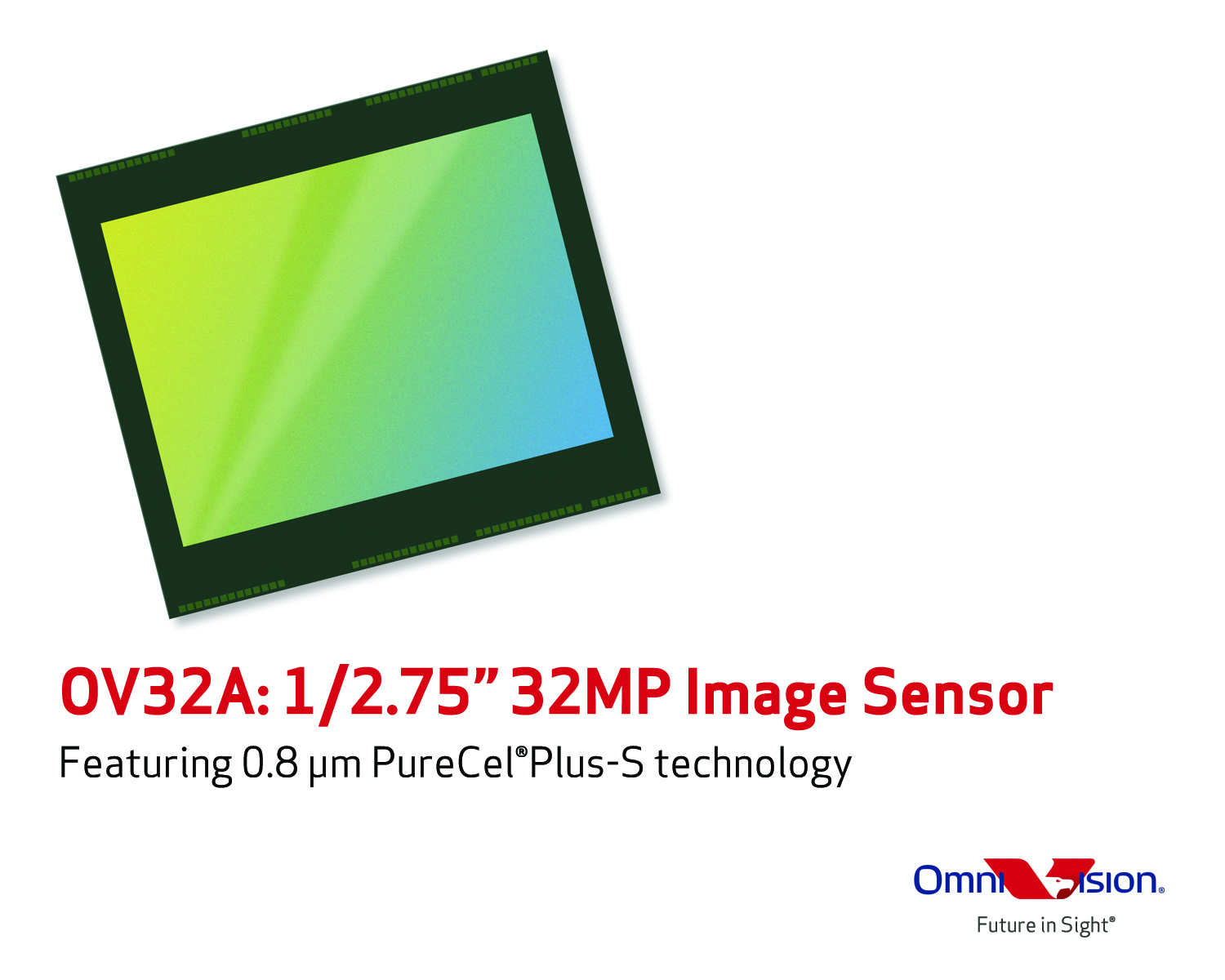
The OmniVision OV32A meets consumer demand for greater resolution in high-end mobile phones and selfie cameras.
2. SmartSens SC4238 4-MP 1/3-inch image sensor
Enabling a combination of AI and the internet of things (IoT) for home monitoring, mainstream consumer, and professional cameras, SmartSens introduced the SC4238, a 4-MP 1/3-inch CMOS image sensor. Features include backside-illuminated (BSI) pixel processing and excellent imaging quality in low-illumination and highly complex environments. It supports a high dynamic range, with a wide dynamic range up to 100 dB in HDR mode, and features near-infrared (NIR) enhancement, improving the quantum efficiency of the 850-nm to 940-nm band.
BSI pixel technology delivers a 2.0-μm pixel structure and 1/3-inch optical size, with sensitivity of up to 2,800 mV/Lux-s and a max signal-to-noise ratio of 39 dB. The SC4238 can be used in a variety of fixed-focal-length lenses, zoom lenses, and wide-field lenses. Competitively, the SC4238 performs well under ultra-low-light condition, yielding a signal-to-noise-ratio that is a 2.6× performance improvement over the closest competitor, according to the company.
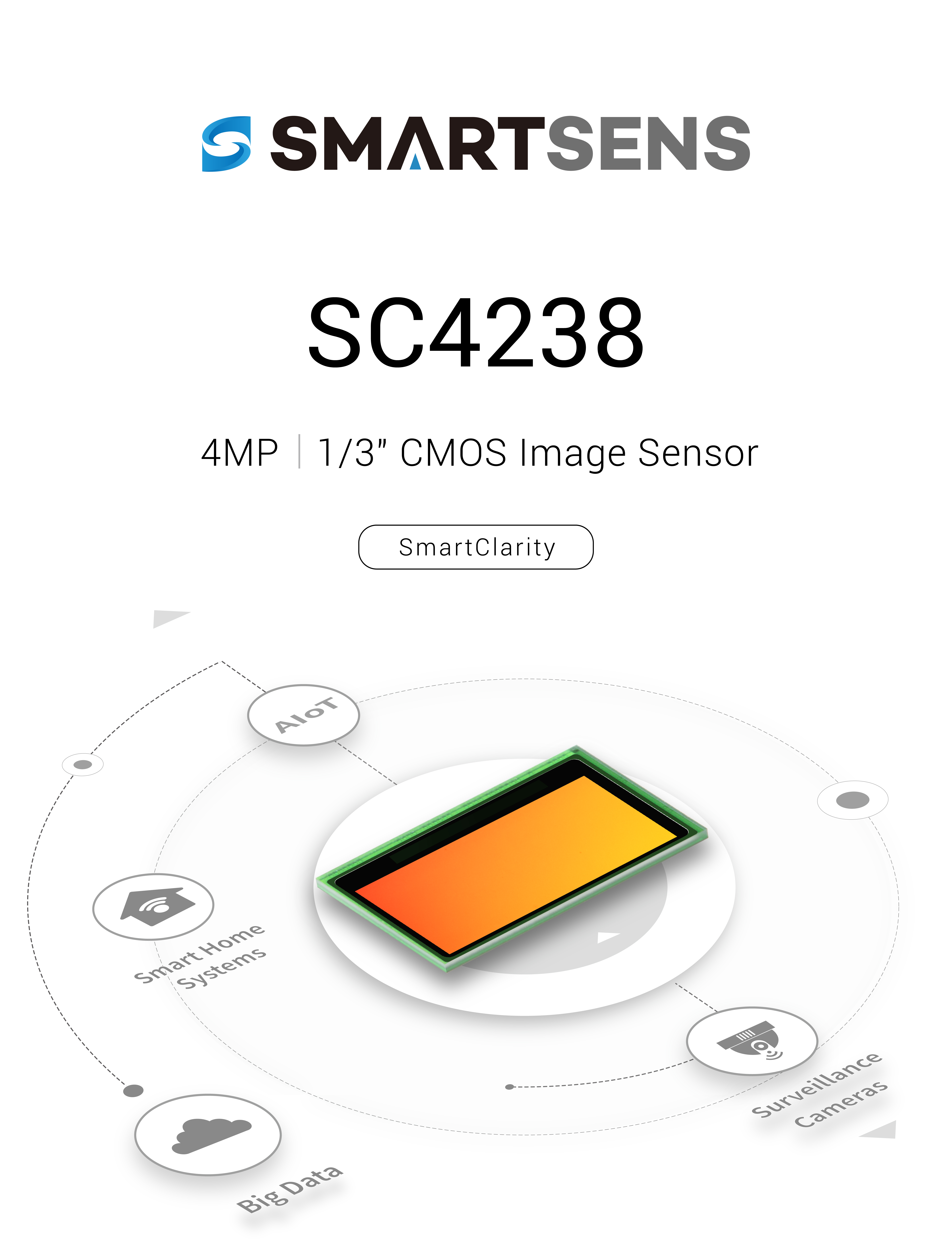
The SmartSens SC4238 has the advantage of high quality and good performance under ultra-low-light conditions, achieving 2.6× better performance than the competition.
3. Samsung ISOCELL Slim 3T2 image sensor
For smartphone designers requiring high resolution and a very small footprint, Samsung Electronics introduced its ISOCELL Slim 3T2, the company’s smallest image sensor to date. A mere 1/3.4 inches in size (approximately 5.1 mm diagonally), the 0.8-μm pixel ISOCELL Slim 3T2 provides 20-MP resolution for front and back cameras in sleek mid-range smartphones.
Totaling 20 million active 0.8-μm pixels, the sensor provides excellent clarity, detail, and high color fidelity using Samsung’s ISOCELL Plus technology . The sensor fits into a tiny module so that designers can harness greater display real estate. Samsung’s Tetracell technology merges four pixels to work as one, enabling the 3T2 to deliver brighter and sharper pictures in low-light settings. The tiny form factor reduces the height of the tele-camera module by approximately 7%. Compared to a 13-MP sensor at the same module height, the 20-MP 3T2 retains 60% higher effective resolution at 10× digital zoom for clearer and more accurate results.
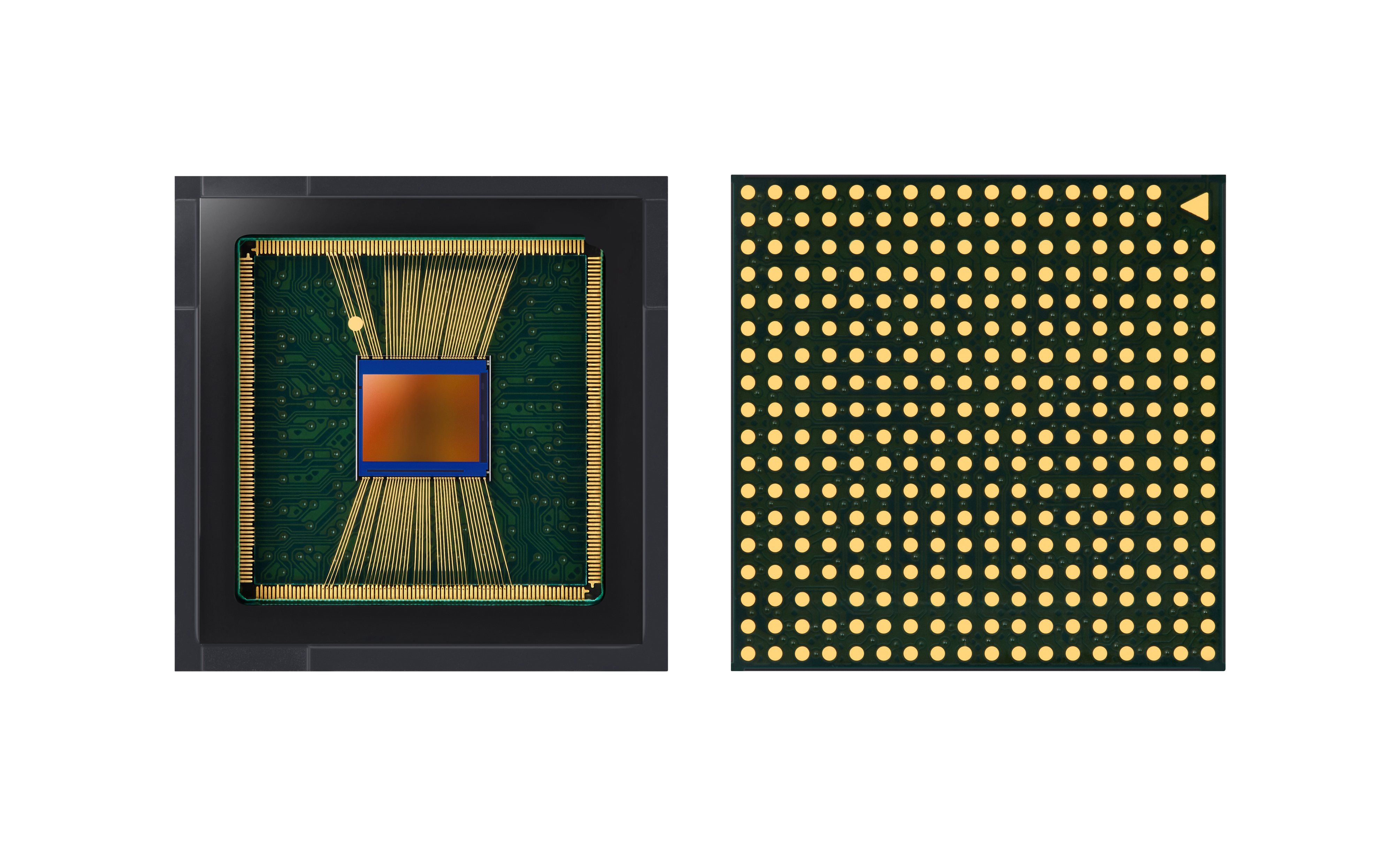
Enabling high-resolution images, the Samsung ISOCELL Slim 3T2 has the industry’s smallest form factor at only 1/3.4 inches.
4. Sony IMX335 image sensor
Sony Semiconductor Solutions launched its IMX335 image sensor for embedded vision in security and select industrial and factory automation applications. Providing a resolution of 5 MP at a pixel size of 2 µm, the 1/2.8-inch sensor features a BSI pixel architecture. It delivers high sensitivity and rates of up to 60 fps through a MIPI interface.
Sony’s Starvis BSI pixel technology provides high sensitivity in the visible light and NIR spectrums. A variety of readout modes supports advanced surveillance options for improved picture quality. The horizontal/vertical 2 × 2-line binning mode allows the summing of neighboring pixels for a brighter “super pixel” that provides more information, especially under low-light conditions.
Dynamic range up to 72 dB, advanced HDR functions, and digital overlap HDR further improve the image quality and contrast behavior, allowing for detailed image analysis when looking at both bright and dark regions simultaneously.
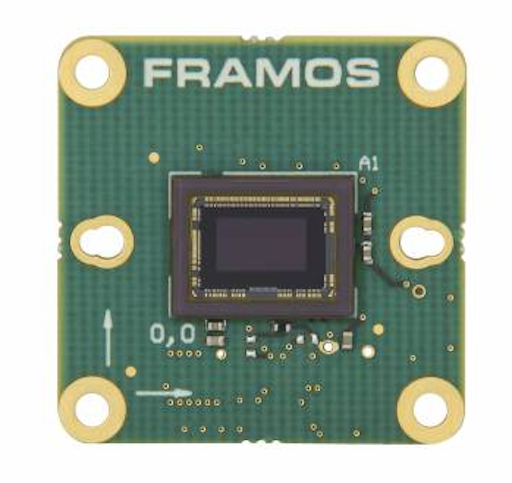
Sony FRAMOS offers a sensor module based on the Sony IMX335 to assist designers in rapid integration.
5. ON Semiconductor KAI-50140 CCD image sensor
ON Semiconductor’s KAI-50140 50-MP Interline Transfer CCD image sensor delivers excellent imaging detail and uniformity required for smartphone display, circuit board and mechanical assembly inspection, and aerial surveillance. The KAI-50140 delivers high-resolution images so that even the tiniest details are detected by the CCD, improving failure detection rates and reducing production line costs.
Frame rates supported are up to 4 fps using a flexible one-, two-, or four-output readout architecture. The new sensor shares the same pin definitions as the 29-MP KAI-29050, KAI-29052, and KAI-43140 image sensors, enabling the KAI-50140 to be incorporated into existing camera designs easily, speeding time to market. Both monochrome and Bayer color configurations allow spectral sensitivity to be matched to the application at hand, and there is a 2× improvement in light sensitivity compared to a standard Bayer color part.
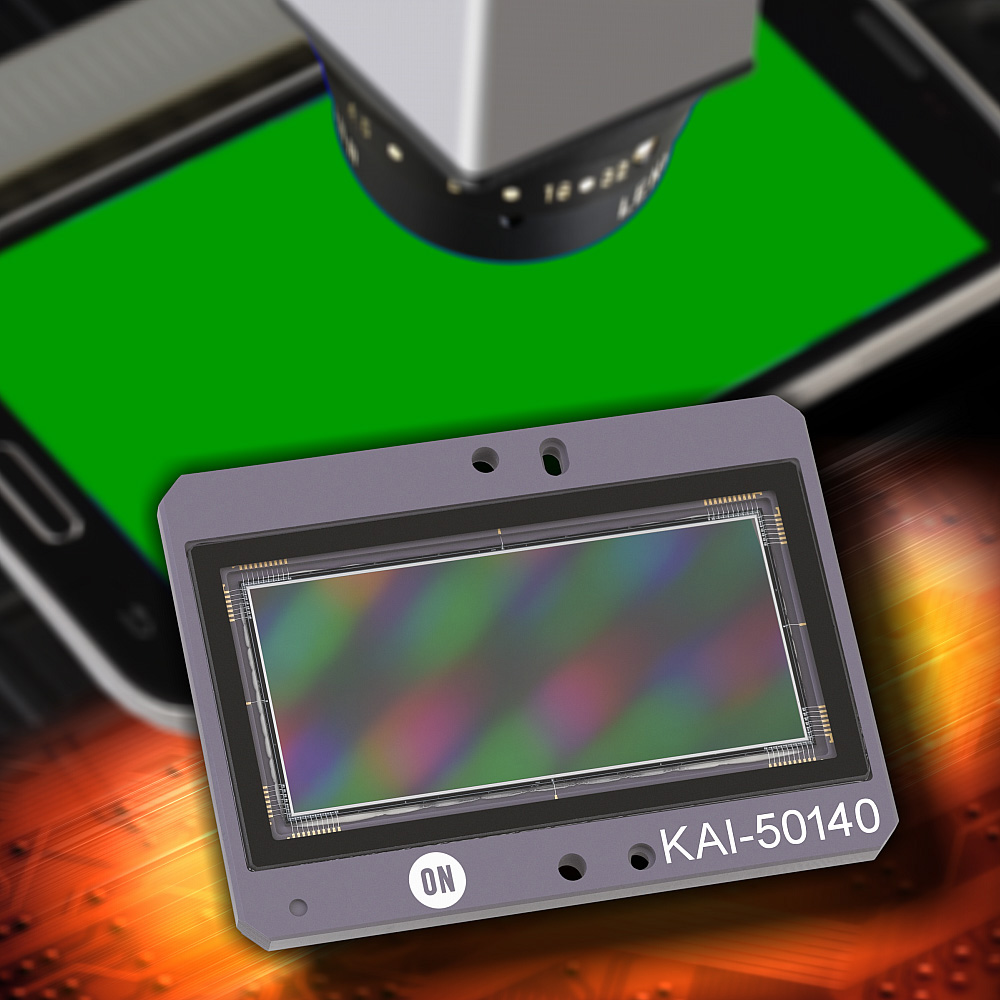
Applications for the ON Semiconductor KAI-50140 include industrial imaging and inspection, circuit board and mechanical assembly inspection, and security and surveillance.
6. ams CSG14k global shutter image sensor
ams introduced a global shutter image sensor for machine vision and automated optical inspection (AOI) equipment, claiming that it offered a better image quality and higher throughput than previous devices supporting a 1-inch optical format.
Designed to provide the dynamic range to handle wide variations in lighting conditions commonly found in manufacturing and inspection environments, the CSG14k image sensor is built around a 3,840 × 3,584-pixel array, resulting in a 14-MP resolution and 12-bit output for high-quality images of fast-moving objects without motion artifacts.
The performance and resolution achieved are based on innovations in the design of the sensor’s 3.2 × 3.2-µm pixels so that the pixels are 66% smaller compared to previous generations. Configuration options include low-power modes at a reduced frame rate and optimizations for low noise and high dynamic range.
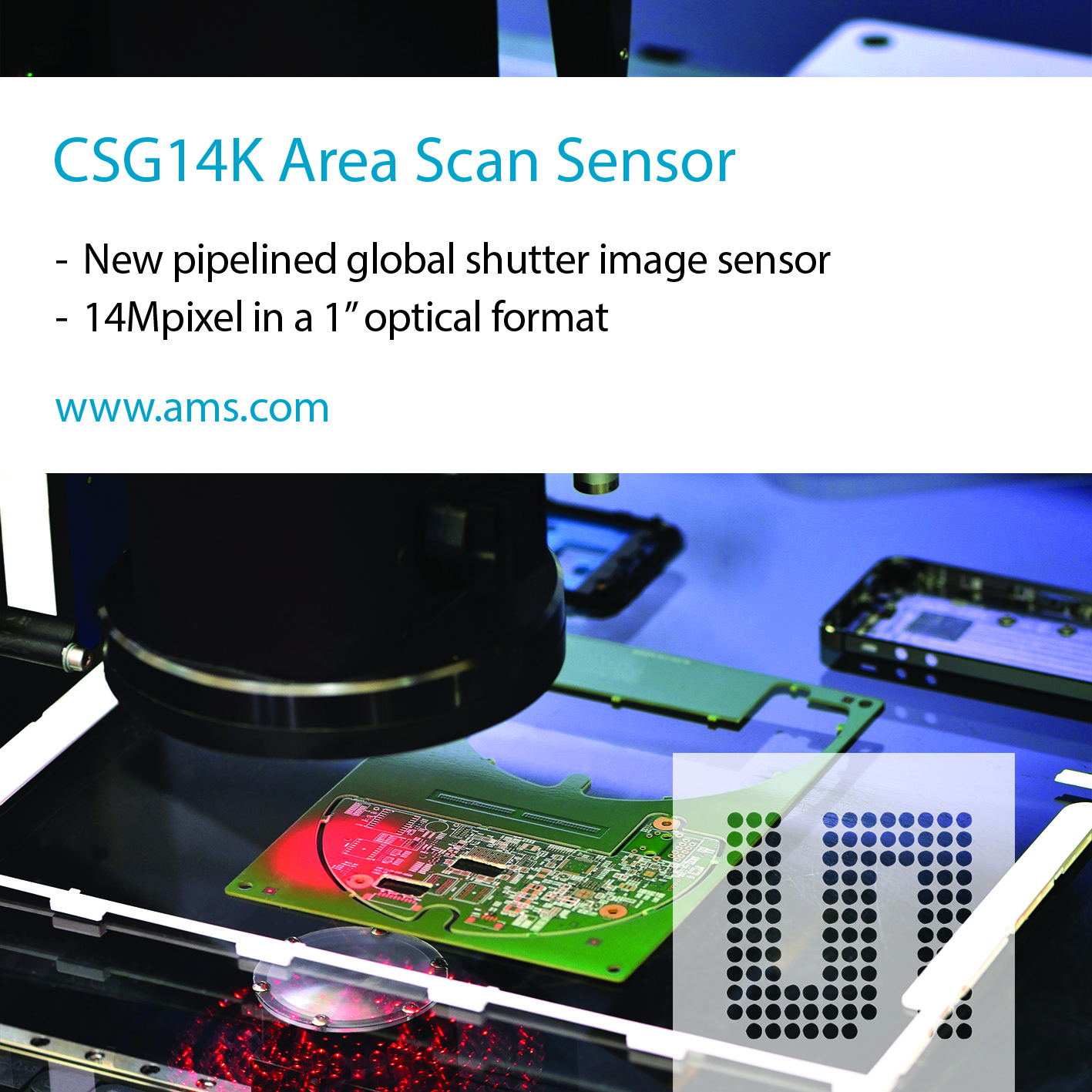
The ams CSG14k 14-MP image sensor delivers 12-bit output for high-throughput AOI applications.
7. Teledyne Emerald 2M global shutter sensor
Teledyne added a low-cost option to its e2v Emerald family of image sensors that is compatible with various image signal processors using the MIPI CSI-2 interface for mobile applications. The Emerald 2M is a CMOS global shutter sensor that targets machine-vision applications with 5° chief ray angle compensation. Designed for compatibility with 1/3-inch optics, the Emerald 2M features multiple regions of interest, subsampling, first-frame auto-exposure, single-frame HDR, and on-chip statistic functionalities. Emerald 2M digital circuits are enriched with real-time pre-processing algorithms that minimize data storage and processing loads while maximizing information quality in each image.
Applications include AOI, robot guidance, product measuring and grading, label reading and lot tracking, and intelligent transportation systems (ITS). Emerald 2M packaging options include a CLGA package or a miniaturized organic 1.19-mm-thick fan-out package.
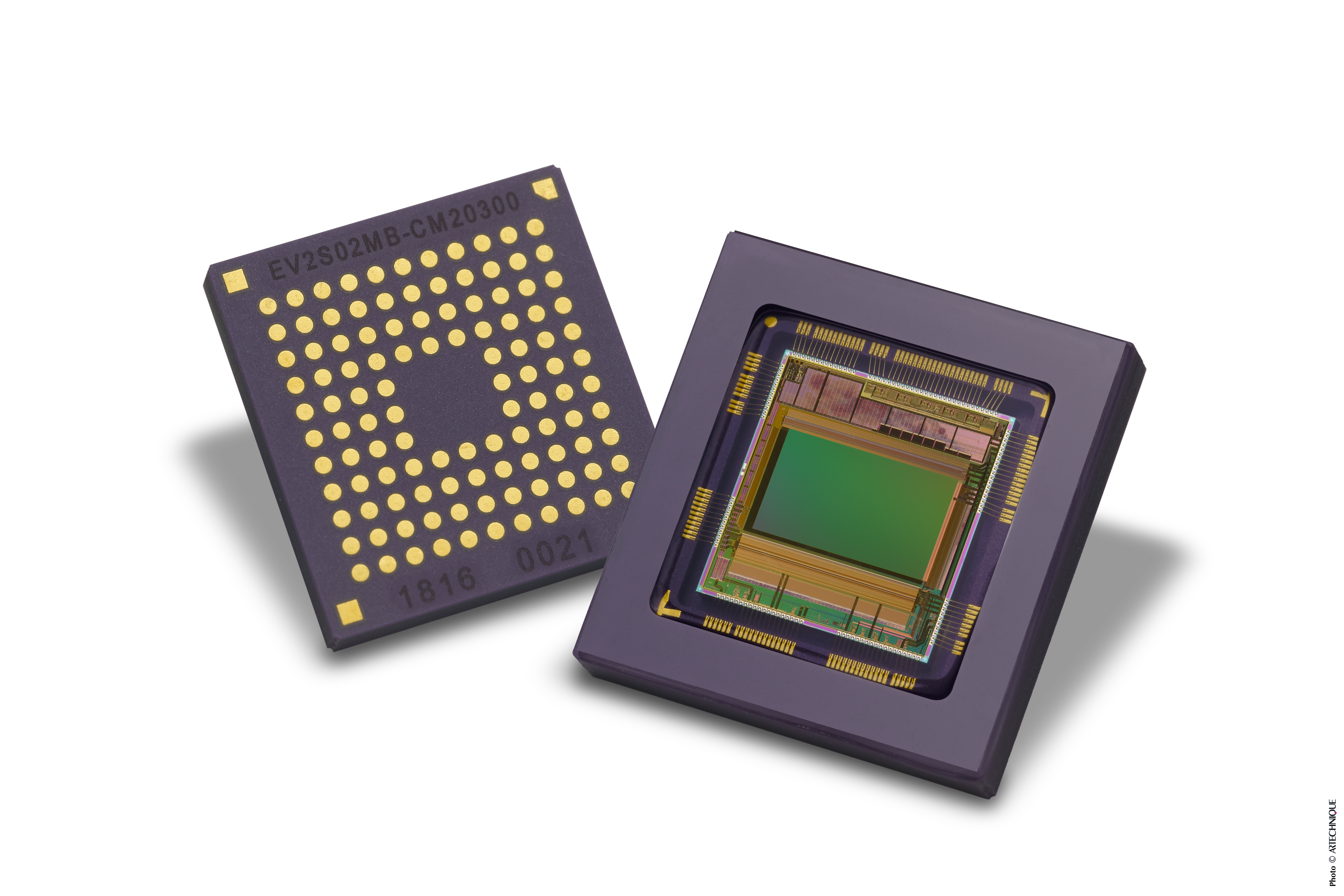
The Teledyne Emerald 2M is a 2-MP CMOS global shutter sensor that provides a lower-cost option for machine vision applications.
8. Infineon REAL3 IRS2771C ToF 3D image sensor
Infineon Technologies’ REAL3 time-of-flight (ToF) 3D image sensor is a fourth-generation version that addresses mobile devices requiring high resolution with small lenses. Applications include secure user authentication via face or hand recognition, enhancing augmented reality, morphing, or scanning a room.
At 4.6 × 5 mm, the tiny image sensor features a 150-k (448 × 336) pixel output, a resolution that is 4× higher than most competitive ToF solutions. Infineon claims that the REAL3 image sensor provides unbeaten outdoor performance based on the use of suppression of background illumination (SBI) circuitry in every pixel.
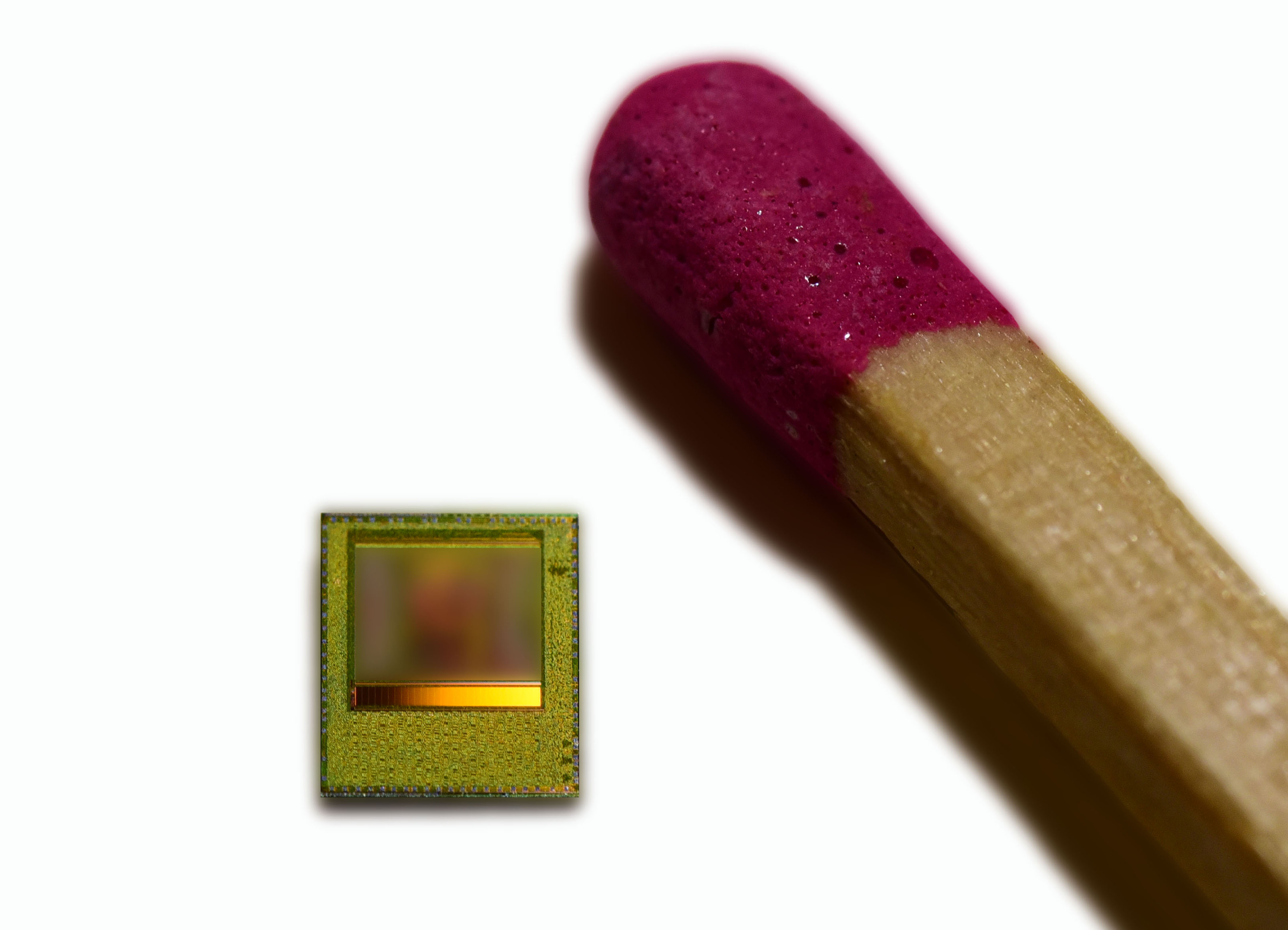
The Infineon ToF 3D image sensor delivers 4× higher resolution than most competitive ToF solutions.
9. Canon 3U5MGXS, 35MMFHDXSCA,120MXS CMOS image sensors
Canon’s CMOS image sensors provide solutions for machine vision, inspection, surveillance, drones, traffic-monitoring systems, and other industrial applications.
The 5-MP 3U5MGXS features an electronic global shutter and an all-pixel progressive reading at 120 fps, providing fast image capture with low power consumption. The sensor also accurately captures images of objects at high speeds without distortion and operates with low power consumption. Applications include medical imaging and parts inspection.
The 35MMFHDXSCA sensor has an impressive 19-µm pixel pitch and is capable of capturing color images in exceptionally low-light environments. New pixel and readout circuitry technologies provide a 2.76-MP resolution, supporting applications that require ultra-high-sensitivity image capture including defense, astronomy, surveillance, and industrial operations.
Canon’s 120MXS incorporates close to the same number of pixels as photoreceptors in the human eye and delivers ultra-high 120-MP resolution and lower noise ratios at 9.4 fps in a compact APS-H (29.22 × 20.20-mm) format. Applications include inspection, aerial mapping, life sciences, digital archiving, and transportation industries.
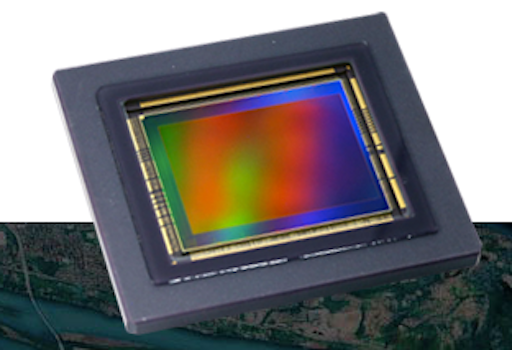
The Canon 120MXS provides an ultra-high-resolution CMOS image sensing solution with 120 MP in APS-H format.
10. Fairchild Imaging LTN4323 and MST4323 imaging sensors
The LTN4323 is a high-performance sensor featuring excellent 0.7 e-RMS read noise. Features include 4,344 × 2,368-pixel resolution and BSI sCMOS 3.0-pixel engineering, which delivers extremely low noise, enhanced MTF, boosted NIR-QE, and reduced dark current. When compared with typical FSI sensors, the BSI process delivers a broad spectrum NIR-QE with >2× sensitivity. Dark current at 30°C is
The MST4323 is a high-performance 4K sensor also using BSI sCMOS 3.0 pixel engineering. With an 87-dB dynamic range, the sensor captures every scene detail under demanding lighting conditions for applications such as pro-video and cinema systems, machine vision, and industrial. Features include a BSI process implementation for high quantum efficiency (QE), low 1.0 e-RMS noise performance, low-light sensitivity, and a 4,344 × 2,368-pixel size that provides a 248 × 208 overscan beyond DCl-4K resolution for an increased field of view.
Both sensors use Fairchild’s sCMOS 3.0 design techniques and BSI processing to dramatically lower color crosstalk and boosts MTF resulting in high color fidelity and sharpness.
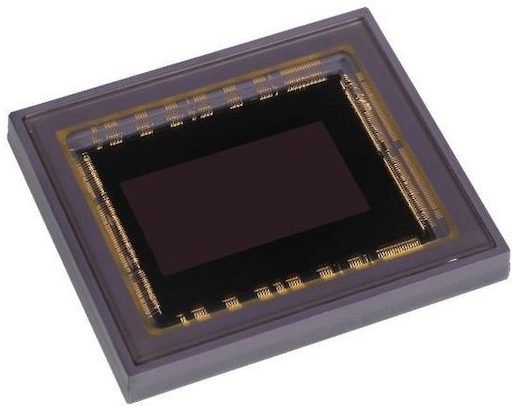
The Fairchild Imaging MST4323 4K sensor uses BSI sCMOS 3.0-pixel technology for pro-video and cinema systems, machine vision, and industrial applications.
Advertisement
Learn more about ams (formerly austriamicrosystems)Canon U.S.A.Fairchild SemiconductorInfineon TechnologiesOmniVision TechnologiesTeledyne Lecroy





